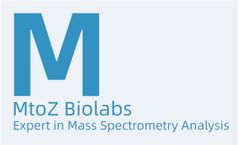Inflammatory Lung Disease Articles & Analysis
49 articles found
These chemokines protein allows researchers to study the functional dynamics of chemokine-receptor interactions in controlled environments, facilitating the development of targeted therapies for a range of diseases, including cancer, autoimmune disorders, and chronic inflammatory conditions. ...
In the realm of biomedical research, the study of cytokines and chemokines plays a pivotal role in understanding the immune system and its responses to various stimuli. For researchers working with rat models, the Rat Cytokine and Chemokine Panel offers an invaluable set of tools to investigate these complex signaling molecules. In this article, we will explore what cytokines and chemokines are, ...
Cytokines are small proteins that play a crucial role in cell signaling, particularly in the immune system. They regulate inflammation, immunity, and hematopoiesis, making them essential for understanding various biological processes and disease mechanisms. For researchers working with rabbit models, the ability to accurately measure cytokine levels is vital. This is where Customized Rabbit ...
Antibody drugs are a kind of drugs that treat diseases through artificially synthesized antibodies, achieving therapeutic purposes by specifically binding with target molecules. Common types of antibody drugs include monoclonal antibodies, artificially synthesized antibody fragments, immunotoxins, antibody-drug conjugates, etc. Antibody drugs have shown remarkable therapeutic effects in the ...
Antibody drugs are a type of drugs that treat diseases through artificially synthesized antibodies, which bind specifically to target molecules for therapeutic purposes. Common types of antibody drugs include monoclonal antibodies, artificially synthesized antibody fragments, immunotoxins, and antibody-drug conjugates, etc. Antibody drugs have shown significant therapeutic effects in the ...
Overactive elastase can cause excessive breakdown of elastin, leading to diseases such as emphysema, where the alveoli in the lungs lose their elasticity, and various skin disorders marked by premature aging or loss of elasticity. ...
Autophagy is an intracellular system that degrades cytosolic proteins and organelles. Autophagy can be divided into three groups: macroautophagy, microautophagy and chaperon-mediated autophagy (CMA). Macroautophagy is most extensively studied and best known among the three pathways. When macroautophagy is induced, an isolation membrane encloses a portion of cytoplasm, forming a characteristic ...
Drug antibody testing is a laboratory testing method specifically designed to evaluate the immune response of the human body to certain drugs. This test is commonly used to monitor a patient's immune response to biological agents or other drugs, especially in the treatment of chronic diseases such as autoimmune diseases, certain cancers, and inflammatory diseases. The principle of drug antibody ...
In post-translational modification (PTM) of proteins, ubiquitination is considered one of the most critical processes in regulating cellular functions and various diseases. The identification of ubiquitination sites becomes very crucial for understanding the mechanisms of ubiquitination-related biological processes. Experimental and computational methods can be used to identify ubiquitination ...
Nanobodies, also known as single-domain antibodies, have gained much attention in recent years due to their potential in various biomedical applications including drug delivery systems. Nanobodies are small antibody fragments derived from naturally occurring heavy-chain antibodies found in camelids, such as camels and llamas. They are composed of a single monomeric variable domain, making them ...
T cells are the most numerous and functionally complex type of lymphocytes, mainly including CD4+ T cells and CD8+ T2 cells, which play an important role in cellular immunity and assist in humoral immune response. According to their functions in the immune response, T lymphocytes mainly include helper T cells (Th cells), regulatory T cells (Treg cells), effector T cells and cytotoxic T cells. ...
Antibody-drug conjugates (ADCs) represent a rapidly developing field within pharmaceutical biotechnology. ADCs are complex molecules composed of an antibody linked to a biologically active cytotoxic or radioactive compound. They combine the specificity of antibodies, which enables specific target cell binding, and the cell-killing activity of cytotoxic drugs, providing a method of delivering ...
The Triggering receptor expressed on myeloid cells 1 (TREM1) protein has emerged as a pivotal player in the intricate web of immunological responses, particularly in the context of inflammatory diseases. Unraveling the mysteries of TREM1 entails delving into its structure, function, and implications in various pathological conditions, shedding light on its potential as a therapeutic target. ...
Proteolysis Targeting Chimeras (PROTACs) are a novel approach for degrading target proteins. Recently, a new split-and-mix PROTAC (SM-PROTAC) system based on liposome self-assembly, known as LipoSM-PROTAC, was reported in the Journal of the American Chemical Society. The LipoSM-PROTAC system exhibits selective degradation of target proteins, with folate serving as a key ligand. In this study, the ...
Imagine tiny spheres, smaller than a red blood cell, glowing as they navigate the labyrinthine corridors of the human body. These aren't fireflies, they're fluorescent liposomes, a cutting-edge tool in the world of drug delivery and biomedical research. What are liposomes? Liposomes are microscopic bubbles made from phospholipids, the same fatty molecules that make up cell membranes. These ...
Their immune-modulatory abilities make them a sought-after tool in treating autoimmune diseases, while their differentiation potential is harnessed for tissue repair and regeneration. In a clinical context, MSCs are instrumental in treating osteoarthritis, inflammatory bowel disease, graft-versus-host disease, myocardial ...
Classes of Cell-Penetrating Peptides There are many types of cell-penetrating peptides (CPPs), and their classification is based on physicochemical properties, sources, intake mechanisms, and biomedical applications. There is no unified conclusion yet. According to their physical and chemical properties, CPPs can be divided into three types: cationic, amphiphilic and hydrophobic, among which ...
Furthermore, MMP-3 is a reliable biomarker for assessing disease activity, imaging monitoring, predicting disease outcomes, and treatment response in rheumatoid arthritis [4]. MMP-3 and Ankylosing Spondylitis (AS) AS is a chronic inflammatory disease that primarily affects the spine and sacroiliac joints. ...
Autoimmune disease target - IL-17 Family IL-17 plays an important role in promoting autoimmune diseases such as psoriasis, psoriatic arthritis, and ankylosing spondylitis (AS). Currently, five large-molecule biopharmaceuticals targeting IL-17/IL-17R are available worldwide, including four IL-17 monoclonal antibodies and one IL-17RA monoclonal antibody, namely Secukinumab(Novartis), Ixekizumab(Eli ...
IL-38 also binds to IL1R6 and has anti-inflammatory effects similar to IL-36 Ra. IL-36 is mainly distributed in skin, lungs, joints, intestines, kidneys, and the brain, and can be produced by various cells such as monocytes/macrophages, T lymphocytes, B lymphocytes, keratinocytes, M2 cells, Langerhans cells, etc. ...













